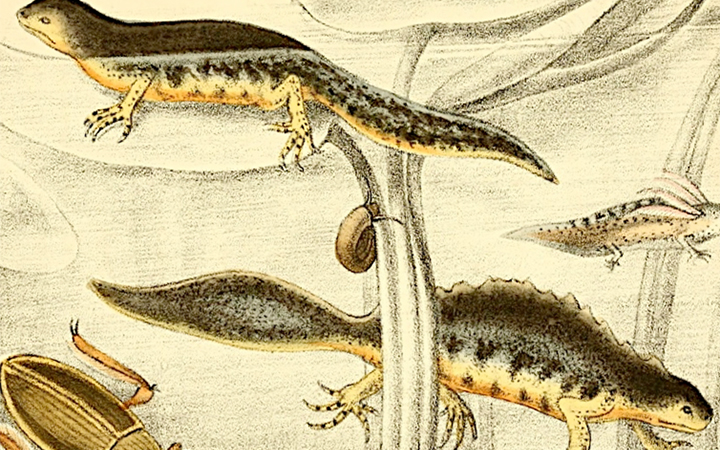The northern crested newt, also known as the great crested newt or warty newt (Triturus cristatus) is anewt in the family Salamandridae, found across Europe and parts of Asia.
It is a relatively large species. Females can measure up to 16 cm and are larger than males, which measure 14 to 15 cm long.[2]
These newts have dark grey-brown backs and flanks, and are covered with darker-coloured spots so they appear almost black. Their undersides are either yellow- or orange-coloured and are covered in large, black blotches, which have a unique pattern in each individual.
Males can be distinguished from females by the presence of a jagged crest during the breeding season. This runs along their backs, then a separate smoother-edged crest runs above and below their tails (in some other species of newts, the crest along the back is continuous with the tail crest). They also have a silver-grey stripe that runs along the tail.
Females lack a crest, but have a yellow-orange stripe along the lower edge of their tails and often a marked orange stripe along the top of their lower backs and tails.[3][4]
(From Wikipedia, March 2015)




